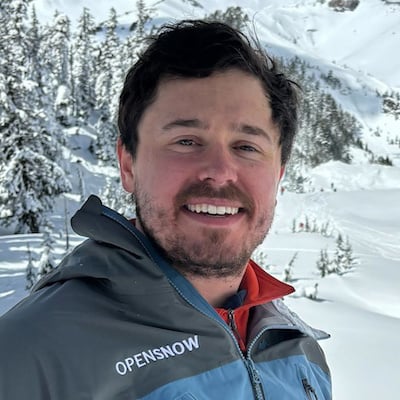News

By Zach Butler, Meteorologist Posted 1 year ago November 10, 2022
Citizen Science Opportunities
Did you know that even you can contribute to weather and climate data in the United States?
Referred to as citizen science, your contributions to the scientific process improve data availability. You can alert officials or organizations of real-time weather observations to improve weather and hydrologic forecasts. The outline below includes several opportunities for citizens like you to take part in citizen science that improves forecasts and observations at OpenSnow.
Meteorological Phenomena Identification Near the Ground project (mPING):
mPING users can report and view the type of precipitation or weather they and others are experiencing. There is no need to measure precipitation, and users can use the free mobile app to send reports anonymously. Reports are recorded into a database automatically, improving weather computer models.
Scientists use these reports to improve forecasts related to road maintenance, aviation operations, and public warnings. mPING is similar to the Mountain Rain or Snow (see below) tool but with the additional ability to view other observations in real-time. Currently, mPING is available globally and supports 11 languages. Due to its ease of use and ability to report any type of weather and view other real-time weather reports, this application is one of my favorite ways to contribute to citizen science.

Photo from mPING Cell Phone App.
Mountain Rain or Snow is a citizen science campaign using a cell phone or desktop app to monitor the transition from rain to snow and snow to rain in mountain regions. The goal of Mountain Rain or Snow is to improve satellite remote sensing data and hydrologic models to better estimate what type of precipitation falls during winter storms.
Typically, citizen science users are driving to the mountain or skiing up and down the mountain where there is a rain-to-snow transition zone. The cell phone or desktop app automatically finds the user’s GPS location, then with one easy button, the user notes whether it is raining, snowing, or mixing. Mountain Rain or Snow information also assists with the prediction of weather conditions for skiers and snowboarders.

Photo Courtesy of Mountain Rain or Snow.
Community Snow Observation (CSO):
CSO is a citizen science campaign to measure snow. The goal of CSO is to predict snow conditions and improve safety for mountain travelers. Snow data helps improve hydrologic models' ability to predict runoff, which affects avalanche hazards, water resources, and ecology.
Specifically, backcountry enthusiasts can contribute to CSO because of their ability to reach remote areas, which are too vast for researchers to monitor. Using only a snow probe and a cell phone, backcountry users gather crucial snow depth data, even in the absence of cell phone service. CSO tutorial guides users to learn how to take measurements and submit them via several different cell phone apps or desktop apps.
CSO data improves forecasts and observations at OpenSnow, based on citizen scientists' snow reports. It is quick and easy for you to contribute to global science in an activity you are already doing!

Photo Courtesy of CSO.
National Weather Service (NWS):
- Throughout the NWS, there are several ways to improve weather observations. There is the Skywarn program, which assists with identifying weather-related events and reporting hazardous weather to the NWS. The NWS meteorologists train volunteers to identify and describe severe weather and accurately measure precipitation. Visit the Skywarn webpage and then contact your local NWS office to find out about free local and online training. Many offices require training, which typically takes 2 hours.
- There is the Cooperative Observer Program (COOP), which prepares you to become a weather observer for the NWS where you live, work, or play. The NWS provides the training, equipment, and maintenance, while you provide daily data. Data from the program supports warnings, forecasts, and helps build a long-term weather history for an area. This program has existed since 1890 and is one of the few programs that measure snowfall and its water equivalent.
- There is the Community Collaborative Rain, Hail, and Snow Network (CoCoRaHS), which is a volunteer network of observers who measure precipitation from their backyard. CoCoRaHS sells low-cost equipment to help volunteers get started. Observers enter their observations onto a website or on their phones via the internet. Data is used by a wide variety of users ranging from meteorologists and hydrologists to insurance adjusters and engineers. Sign up here!
There are other citizen science opportunities including Spotter Network for severe weather and research-based applications that are snow related such as the Living Snow Project.
Thanks for reading and make sure you get involved with citizen science!
Zach Butler
About The Author





